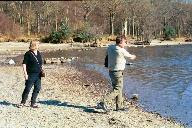One of the things that struck us this year and last in (the republic of) Cyprus is the large number of black people. The visual perception may be somewhat distorted because Cypriots are not walkers by choice, so those you pass on the street are probably disproportionately expats, students, and asylum seekers. It’s easier to notice people of colour when they walk past than it would be if they were driving by. But many more dark faces. The majority apparently male and many, but by no means all, of them young enough to be students. And not unusual to see black women alone or with small children. The women often very well dressed.
Cyprus received 458 Syrian refugees from Lebanon during the last week in October as well as quite a few refugees from Israel following October 7. But its location in proximity to Africa and the Middle East combined with its status as an EU country has made it an attractive destination for many asylum seekers.
Perhaps more attractive than it should have been. Asylum seekers now make up six percent of the population, an EU record. Compare, for example, with the United Kingdom where last year there were around 13 asylum applications for every 10,000 people living in the UK. Cyprus is rather insular (well, that’s where the word comes from - insula, Latin for island). Minorities not always welcomed with open arms and, in fact there have been problems, including a fight earlier this week between Nigerian and Syrian migrants at a reception centre near Nicosia. Clashes between Greek Cypriots and migrants have also occurred. It’s surprising that there hasn’t been more trouble. Cypriot bureaucracy is abysmal at the best of times and is hopelessly behind in processing asylum applications.




